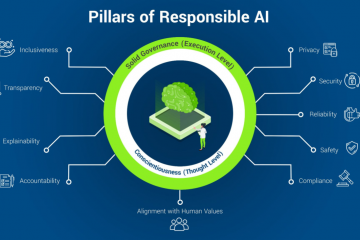In the age of data-driven decision-making, businesses rely heavily on data integration to unify information from multiple sources. Whether to choose a cloud-based or on-premise data integration solution is a critical decision that depends on several factors, including cost, control, scalability, and compliance needs. This article explores the pros and cons of each approach to help you determine which is better suited for your business.
1. Deployment: Simplicity vs. Control
Cloud-based data integration solutions are hosted by third-party providers and accessed via the internet. This makes deployment faster and simpler since there’s no need for physical hardware or complex installations. On the other hand, on-premise solutions require installation on local servers managed by your IT team, offering complete control but demanding significant setup efforts14.
2. Cost Considerations
Cost is a major differentiator between cloud-based and on-premise solutions. Cloud platforms typically operate on a subscription or pay-as-you-go model, which minimizes upfront costs but can add up over time as data volumes grow. Conversely, on-premise solutions involve a high initial investment in hardware and licenses but may prove more cost-effective in the long run for businesses with stable data needs46.
3. Scalability and Flexibility
When it comes to scalability, cloud-based solutions have a clear edge. They allow businesses to scale resources up or down based on demand without requiring additional infrastructure investments. This flexibility is particularly beneficial for organizations experiencing rapid growth or seasonal fluctuations in data volume. In contrast, scaling an on-premise system often involves purchasing new hardware and managing complex upgrades26.
4. Security: A Double-Edged Sword
Security is a top concern for any business handling sensitive data. On-premise solutions offer greater control over security since all data remains within the organization’s infrastructure. This makes them ideal for industries with strict regulatory requirements, such as healthcare or finance. However, cloud providers have made significant strides in enhancing their security features, including encryption and regular audits, though concerns about third-party access persist16.
5. Compliance Challenges
Compliance with industry regulations can be easier with on-premise systems because businesses retain full control over their data storage and processing practices. Cloud-based solutions require organizations to ensure that their providers meet compliance standards, which can be challenging in highly regulated industries14.
6. Speed and Agility
Cloud-based integration platforms are designed for agility, enabling rapid deployment and real-time updates. They often come with pre-built templates and automated workflows that reduce the time required to set up integrations. On-premise systems, while customizable, typically involve longer lead times for implementation due to their complexity26.
7. Accessibility and Mobility
Cloud solutions excel in providing remote access to integrated data from anywhere with an internet connection. This feature supports remote work environments and global operations seamlessly. On-premise systems are limited in this regard since they rely on local networks unless additional configurations are made to enable remote access26.
8. Maintenance and Updates
Cloud providers handle system maintenance, updates, and scaling automatically, freeing up internal IT resources for other tasks. In contrast, on-premise solutions require ongoing maintenance by in-house teams, which can be resource-intensive but allows for greater customization of updates49.
9. Customization Opportunities
On-premise systems offer unparalleled customization options tailored to specific business needs since they are fully controlled by the organization’s IT team. Cloud platforms are less customizable as they must cater to a wide range of users, though they often provide enough flexibility for most standard use cases69.
10. Making the Right Choice
Choosing between cloud-based and on-premise data integration depends largely on your business priorities:
- Opt for cloud-based solutions if you prioritize scalability, speed of deployment, cost flexibility, and remote accessibility.
- Choose on-premise systems if your business requires complete control over data security, compliance adherence, or highly customized integrations.
For some businesses, a hybrid approach combining both cloud and on-premise systems may offer the best of both worlds by balancing scalability with control.
Conclusion
The choice between cloud-based and on-premise data integration is not one-size-fits-all—it depends on your organization’s unique requirements and constraints. While cloud platforms shine in terms of scalability and accessibility, on-premise systems remain indispensable for businesses prioritizing control and compliance. By carefully evaluating your needs against the strengths of each option, you can make an informed decision that supports your long-term goals in today’s competitive landscape.



0 Comments